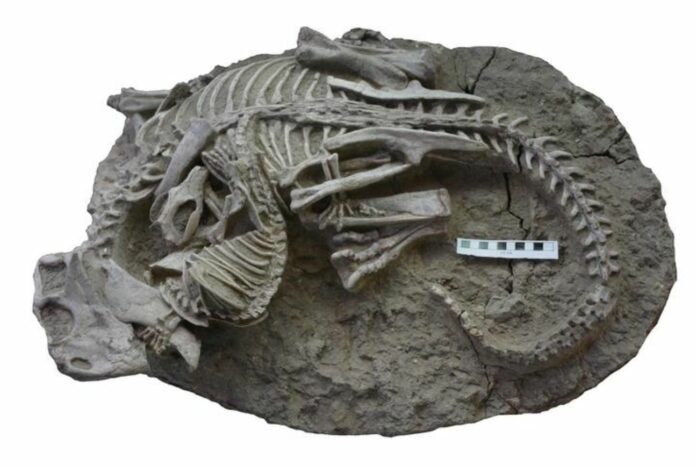The first evidence to show badger-like mammals were actually hunting dinosaurs
This amazing fossil from around 125 million years ago reveals a dramatic moment in time when a carnivorous mammal attacked a larger plant-eating dinosaur.
A unique fossil dating back approximately 125 million years is creating a stir among the scientific community. A joint team of Canadian and Chinese researchers has detailed this exceptional find, which captures a rare scene of a carnivorous mammal in the act of attacking a significantly larger herbivorous dinosaur.
“The two animals are locked in mortal combat, intimately intertwined, and it’s among the first evidence to show actual predatory behaviour by a mammal on a dinosaur,” details Dr. Jordan Mallon, a palaeobiologist at the Canadian Museum of Nature and a contributor to the study, recently published in the Scientific Reports journal.
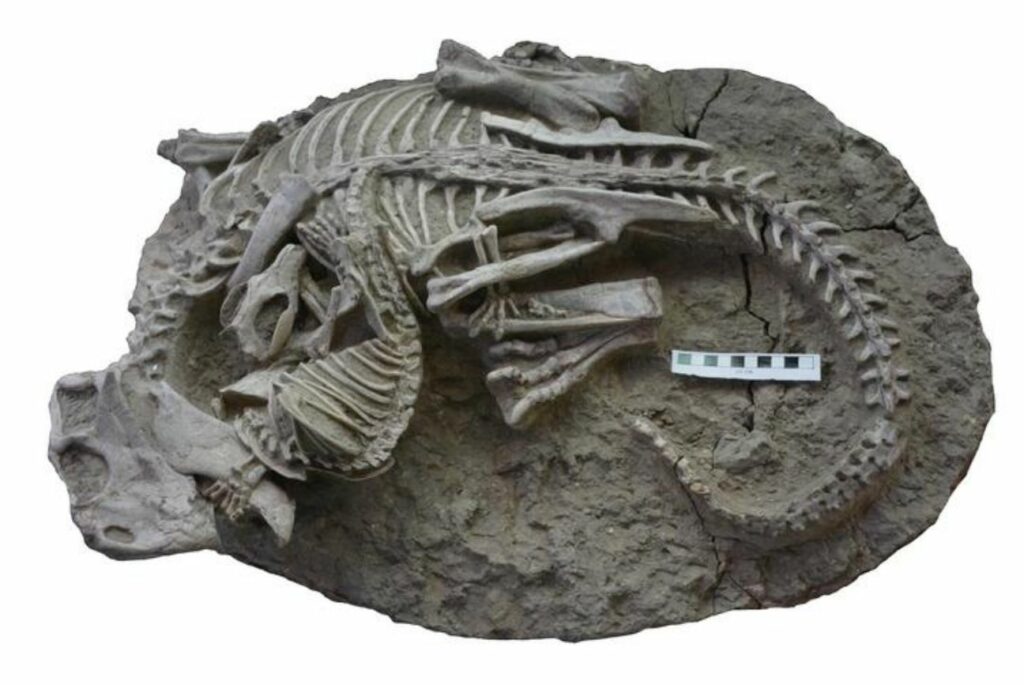
The existence of this fossil poses a challenge to the generally accepted notion that mammals posed little threat to their dinosaur counterparts during the Cretaceous era, a time when dinosaurs held dominance. This extraordinary fossil now resides in the collection of the Weihai Ziguang Shi Yan School Museum, located in China’s Shandong Province.
The dinosaur entrapped in this remarkably preserved fossil is identified as a Psittacosaurus species, roughly the size of a large dog. Psittacosaurs, plant-eating creatures among the earliest known horned dinosaurs, inhabited Asia during the Early Cretaceous period, approximately 125 to 105 million years ago. The mammal partner in this ancient tableau is Repenomamus robustus, a creature akin to a badger. Although small in comparison to dinosaurs, it was among the largest mammals during the Cretaceous era, before mammals began their rise to global dominance.
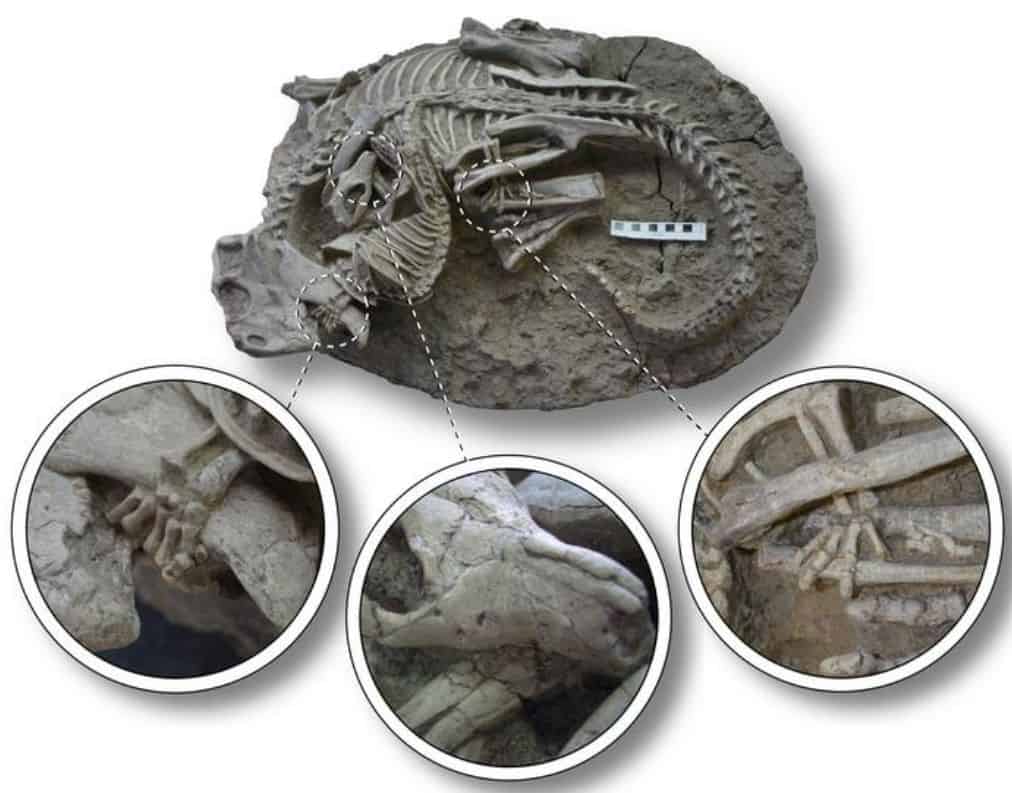
Evidence of Repenomamus preying on dinosaurs, including Psittacosaurus, had been discovered prior to this in the form of fossilized juvenile bones of the herbivore within the mammal’s stomach.
“The co-existence of these two animals is not new, but what’s new to science through this amazing fossil is the predatory behaviour it shows,” observes Dr. Mallon.
Excavated from the Liujitun fossil beds in China’s Liaoning Province in 2012, the two nearly complete skeletons hail from an area popularly known as “China’s Dinosaur Pompeii.” This name originates from the abundance of fossils from dinosaurs, small mammals, lizards, and amphibians, all of which were swiftly buried by volcanic mudslides and debris. The presence of volcanic material within the fossil was verified by Dr. Aaron Lussier, a mineralogist at the Canadian Museum of Nature.
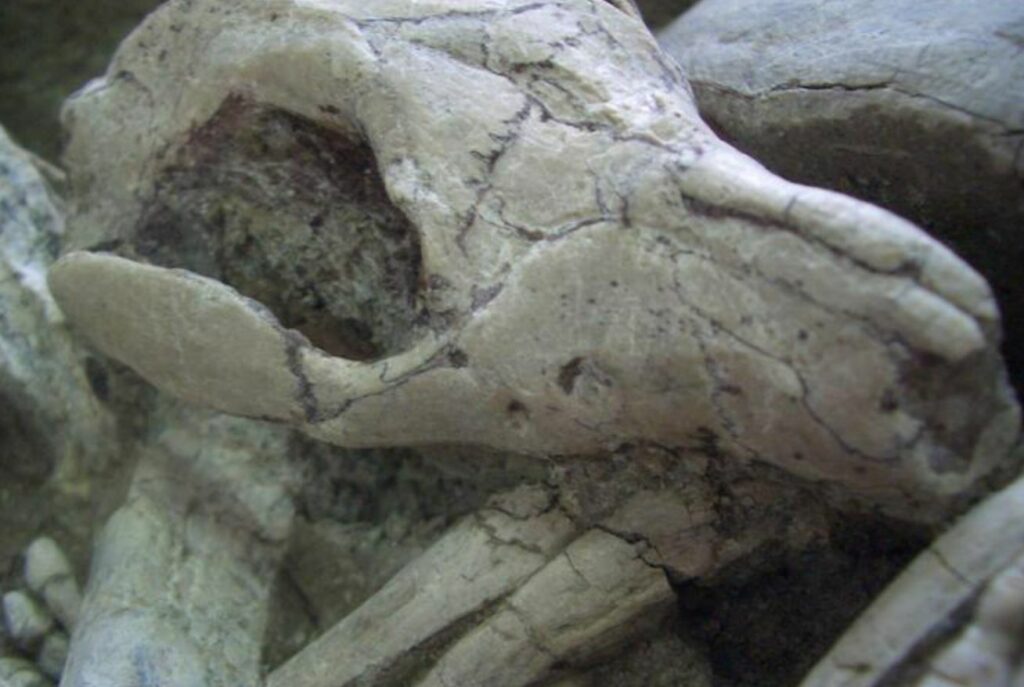
Dr. Gang Han, the study co-author in China, brought the Psittacosaurus-Repenomamus fossil to the attention of palaeobiologist Xiao-Chun Wu at the Canadian Museum of Nature. A detailed study of the fossil revealed the Psittacosaurus in a prone position, its hindlimbs folded at its sides, and the Repenomamus coiled to the right atop its prey, gripping the dinosaur’s jaw. The mammal is also gnawing at some ribs while its hind foot latches onto the dinosaur’s leg.
“The weight of the evidence suggests that an active attack was underway,” asserts Dr. Mallon.
The research team, including Drs. Mallon and Wu, dismissed the idea that the mammal was merely scavenging a dead dinosaur. The dinosaur’s bones lack tooth marks, suggesting it wasn’t being scavenged but rather actively preyed upon. The position of the Repenomamus atop the Psittacosaurus strongly indicates that the mammal was the attacker.
Modern examples of smaller creatures attacking larger prey do exist, as Drs. Mallon and Wu point out. Wolverines, for instance, are known to hunt larger animals, including caribou and domestic sheep, while African wild dogs, jackals, and hyenas are known to attack live prey.
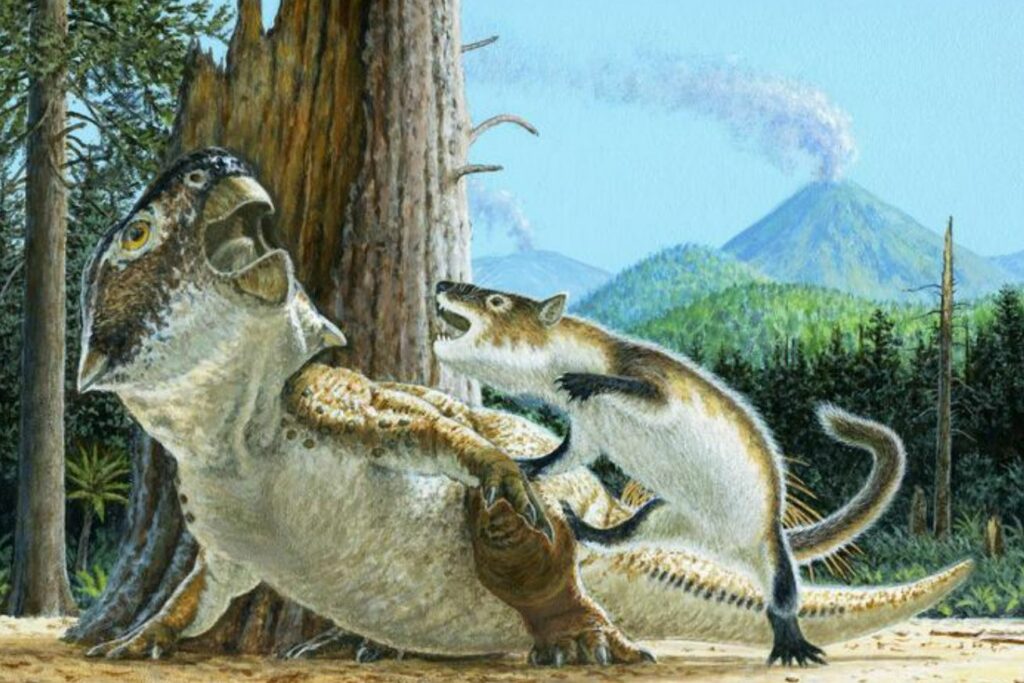
“This might be the case of what’s depicted in the fossil, with the Repenomamus actually eating the Psittacosaurus while it was still alive—before both were killed in the roily aftermath,” Dr. Mallon hypothesizes.
The researchers posit in their paper that the volcanic deposits from the Lujiatun fossil beds will continue to provide novel insights into interspecies interactions that have so far remained elusive in the existing fossil record.
Image Credit: Gang Han
